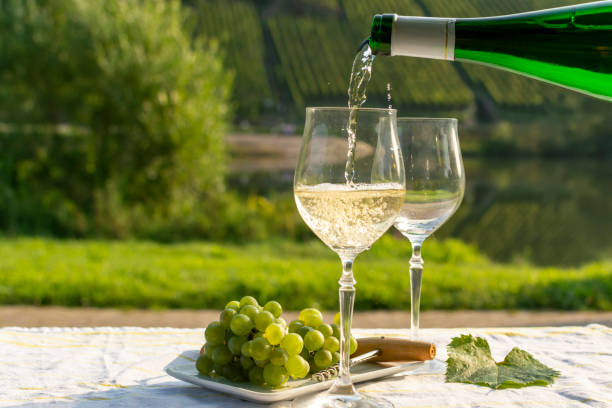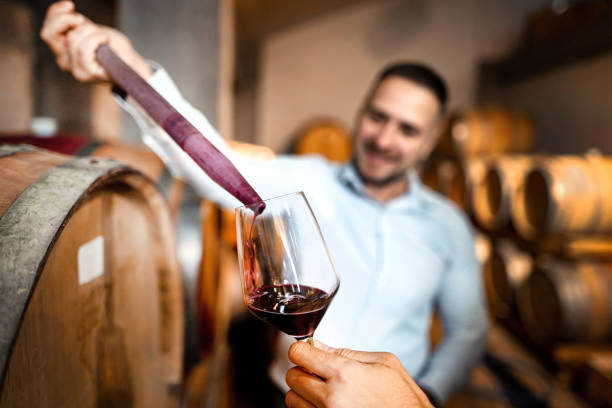Learn what hybrid grapes can offer the wine industry and what trends to expect in the future.
A single grapevine species, Vitis vinifera, makes the majority of wines we drink. This is also known as the “wine grape.” Prior to prohibition, hybrid vinifera varieties were popular in New York State and dominated US markets until Vitis vinifera began being produced. California has gained a reputation as a leading US wine producer after the prohibition ended. These hybrids are usually a cross of two grape species, Vitis labrusca and Vitis riparia. They can be found throughout New York State and North America. They were originally cultivated as a way to combat phylloxera. However, they are not widely accepted in the old world.
Wines made from hybrids today are regarded as cheap, whereas Vitis vinifera wines are gaining a reputation for being dry, premium wines that most consumers consume. Early hybrids left a bad taste in people’s mouths, and that image still lingers. Hybrids have gained in popularity over the past few years. They are resistant to European insect disease and can withstand unusual climate conditions. These grapes can be a blessing for wine regions that are experiencing remarkable climate changes.
Dr. Jose Vouillamoz is a grape geneticist and co-author of Wine Grapes. He says that less than 5% of vineyards produce hybrids. The Finger Lakes have a long history of hybrid grapes. Regions like Vermont and Michigan have been growing hybrids for years.
Vitis Vinifera grapes are used to make most of the wines we consume today. With the growth in natural wines and sustainable wines, we must know Vitis Vinifera grapes are not very sustainable. IWSR estimates that by 2032, 976 million bottles of organic wines will be consumed, a 34% increase from the 720 million bottles sold in 2018. Wines made from hybrids could be a major step forward for the industry, as the demand for sustainable wines is on the rise. Hybrids are more eco-friendly and easier to produce than Vitis vinifera. Eurostat reports that pesticide use is the highest of all agricultural products produced within the EU. Hybrids reduce pesticide use, making them more environmentally friendly and sustainable.
Climate change is a challenge that some US regions face. Vitis vinifera is a difficult grape to grow under extremely cold conditions. With the amount of pesticides and chemicals that are used, it’s also hard to sustain. Vitis vinifera grapes are a challenge to grow in cold climates. This is why winemakers face a lot of challenges, such as those found in the Champlain Valley and Finger Lakes. Cornell University and the University of Minnesota are working on these programs and have created many hybrids that can fight disease and weather conditions.
Climate change has also caused challenges for winemakers in France. This has led to a rise in insurance policies. Climate change is a major problem, and winemakers face challenges due to the rise in temperature, the eventual increase in sugar content, and the production of wines with higher alcohol. Increased alcohol has altered the style of wine and will continue to do so over time. California is a perfect place for grapes. High temperatures can cause more wildfires, which could eventually destroy vineyards. The water used for irrigation is decreasing, and this is a danger to wine producers. Hybrids have become a popular solution to these problems. Some institutions even created new grape varieties to combat disease and weather challenges.
What is PIWI?
PIWIs is short for Pilzwiderstandsfahige. The company is creating hybrid grapes that are widely planted in European regions, but they expect to become a trend in America. PIWI grape varieties are a win for both winegrowers and their customers. These varieties are designed to produce wines of high quality that are both easy to make and serve. This could be a major step forward for the wine industry.
They are also found in parts of Italy. These are crossbreeds between Vitis vinifera and other Vitis species. Vitis vinifera brings the aromas and crosses with native American grapes (or other Vitis) that are resistant to European diseases. PIWI grapes are approved for viticulture and created using the classic vine-breeding method.
PIWI wines have many benefits for the wine industry, and in particular for winegrowers. The spraying of pesticides is reduced, which reduces costs and increases the number of microorganisms in the soil. It is possible to produce organic wines and natural wines under extreme climate conditions. This allows red wines to be grown in cooler regions. Although there are many good hybrid wines on the market, early wines were bland and created a bad image for the wines.
France was the first country to allow PIWI varieties to use Appellation d’origine Controlee in 2019. AOC can be used only up to 5%. France has four PIWI types and classifies them under Vitis Vinifera L. This is why they have made their way into French wines as well as AOC. Champagne has also started to use these hybrids, and we can expect a growth in hybrids in the next few years.




